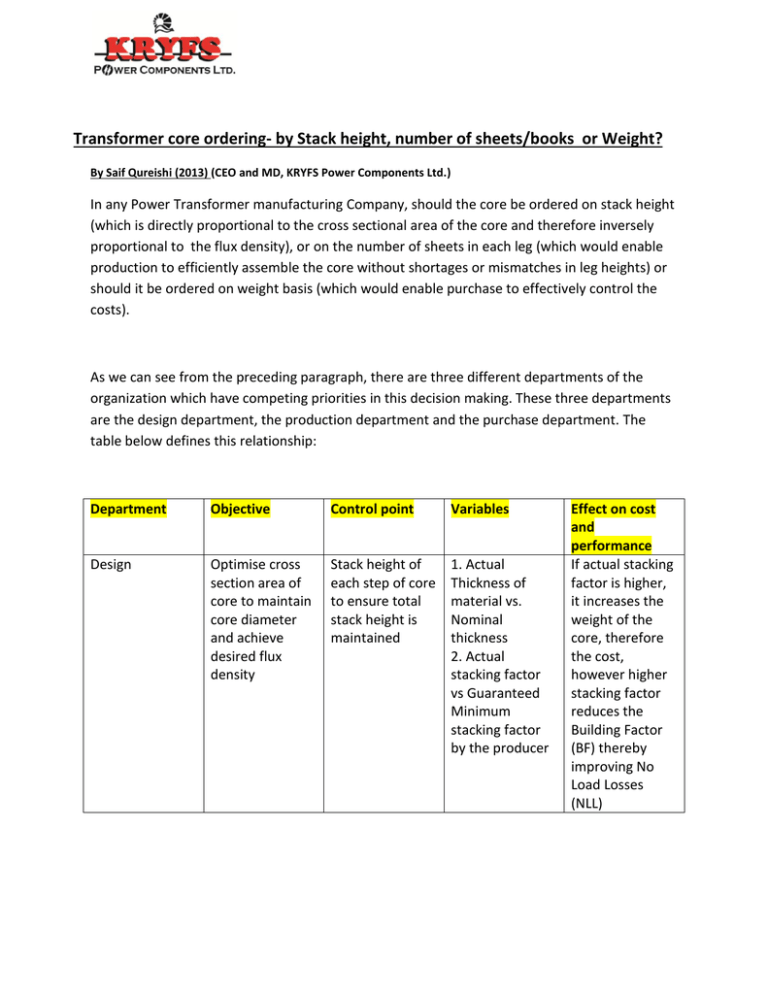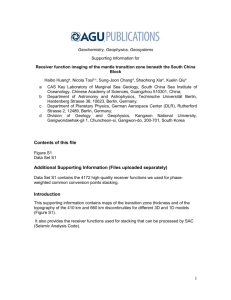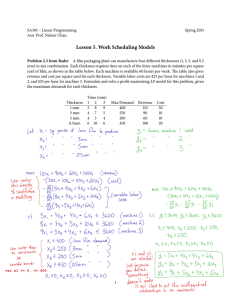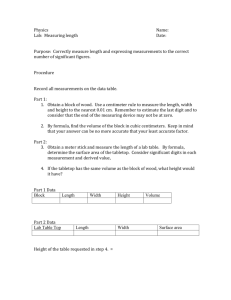Transformer core ordering- by Stack height, number of sheets/books
advertisement

Transformer core ordering- by Stack height, number of sheets/books or Weight?
By Saif Qureishi (2013) (CEO and MD, KRYFS Power Components Ltd.)
In any Power Transformer manufacturing Company, should the core be ordered on stack height
(which is directly proportional to the cross sectional area of the core and therefore inversely
proportional to the flux density), or on the number of sheets in each leg (which would enable
production to efficiently assemble the core without shortages or mismatches in leg heights) or
should it be ordered on weight basis (which would enable purchase to effectively control the
costs).
As we can see from the preceding paragraph, there are three different departments of the
organization which have competing priorities in this decision making. These three departments
are the design department, the production department and the purchase department. The
table below defines this relationship:
Department
Objective
Control point
Variables
Design
Optimise cross
section area of
core to maintain
core diameter
and achieve
desired flux
density
Stack height of
each step of core
to ensure total
stack height is
maintained
1. Actual
Thickness of
material vs.
Nominal
thickness
2. Actual
stacking factor
vs Guaranteed
Minimum
stacking factor
by the producer
Effect on cost
and
performance
If actual stacking
factor is higher,
it increases the
weight of the
core, therefore
the cost,
however higher
stacking factor
reduces the
Building Factor
(BF) thereby
improving No
Load Losses
(NLL)
Production
To build the core
such that there is
no mismatch of
height across
different legs.
No of sheets in
each leg of core
in non-step lap,
number of books
in step lap core
Actual number of
sheets / books
supplied in each
leg.
Purchase
To minimize cost
of materials by
buying exact
quantity of the
core.
Weight of the
core in KGS.
Weight of the
core as defined
by the design
department
using nominal
thickness and
minimum
guaranteed
stacking factor
by producer.
If there is
mismatch in the
number of
sheets, there is
an excess or
shortage in any
of the legs,
thereby making
it difficult to
complete the
core coil
assembly.
Shortage or
excess receipt in
core results in
either core not
being complete,
and cost
accordingly
decreasing or
increasing.
The Design department is the one where the transformer design and the core design
originates. They consider various requirements of the transformer as per the Guaranteed
Technical Particulars (GTP), of which one important parameter, the No Load loss (NLL) is
dependent on the operating flux density which in turn is dependent on the cross sectional area
of the core determined by the designer. Therefore the designer’s objective is to ensure the
cross sectional area of the core is optimal (as it is inversely proportional to the flux density and
therefore the NLL). On freezing the design of the transformer the same is translated to number
of sheets (or books in a step lap core) and weight of the core by the designer using two
variables, the thickness of the material and the stacking factor of the material.
For calculating the number of sheets or books in the core, it is a pretty straight forward formula
of dividing the core diameter by the sheet thickness into the stacking factor. The sheets in each
individual step are also calculated by the same formula:
# of sheets = {CD / (ST*SF)}
Where CD is Core Diameter in mm
ST is Sheet thickness in mm and
SF is stacking factor as given by the mill.
Core weight is calculated by again using the same variables of sheet thickness and Stacking
factor by the following formula:
Core weight = Weight of Core = (3 X Window Height + 4 X Leg Center + 2 X Maximum Width) X Nett
(effective) Cross section area X Density.
Where, Nett (effective) cross section area = stacking factor × {side limb cross section area + center limb
cross section area + yoke plate cross section area}
And Density = ( Weight of sample in gms) / (length x width x thickness in cm)
As can be seen from the above, the two variables Sheet thickness and stacking factor are used
in both calculations and therein lies the root cause of the dilemma on how to order the core,
whether on stack height, number of sheets or the core weight.
Let us examine the two variables viz, the sheet thickness and the Stacking factor a little more in
detail to understand why they are not constant and classified as variables.
While nominal sheet thickness of CRGO is defined by each mill, the process of cold rolling
material cannot produce sheet thickness of exactly same thickness without any variation. The
IEC 60404-8-7 or IS 302 (2006) and other international standards on CRGO all permit a
thickness variation of CRGO upto 10 % of nominal thickness. Therefore CRGO steel of grade M3
which should have a nominal thickness of 0.23 mm. However practically the steel can have a
thickness from 0.215 mm to 0.255 mm i.e. 0.23 mm +/- 0.023 mm (tolerance as defined by IEC).
In reality however most mills maintain a much tighter thickness tolerance than permitted.
However the fact is that the thickness of material does vary within the same grade and also
within the same coil in a typical range of 2 to 3 % of the nominal defined thickness. Most mills
also give lower thickness material as a standard to have better core loss, because core loss is
directly proportional to thickness (For example the actual thickness of AK steel M3 material is
0.215 mm instead of 0.23 mm (as defined by standard)).
The next variable that designers use to calculate the weight of the core is the stacking factor.
Stacking factor is defined as
Effective height/ stack height
Where, stack height is the measured height of the stack under certain pressure
The effective height is the actual height of iron (magnetic material) in the stack
Stacking factor is not a guaranteed value by the mill, and it is mentioned by most Mills as
“Minimum stacking factor”, which is actually much lower than the actual stacking factor of the
material. For example, the Russian mill Viz Steel defines the Minimum guaranteed stacking
factor on it’s MTC as 94.5%, however in reality the stacking factor is more than 97.5 %. Thus if a
designer was to use the Minimum guaranteed stacking factor of 94.5% instead of the actual
average stacking factor of 97.5%, he would under-calculate the core weight by approximately
3.2% (3/94.5).
The actual range of stacking factor of different mills (versus the minimum guaranteed by the
mills in their MTC or catalogue) is shown in Annexure.
As can be seen from the data provided, it is not at all an easy task to predict the weight from
the stack thickness in any particular grade without perusing the actual data of the particular
mill. Using the nominal thickness as defined for the particular grade or the minimum stacking
factor as defined under IEC will lead to under or over prediction of the core weight, thereby
creating a disparity in the purchase order quantity and the stack height of the core received.
So how does any transformer manufacturer practically resolve this seemingly tricky problem?
Which one of the 3 parameters should be used to order transformer core? If stack height is
used, the chances are of mismatch of sheets/books and higher weight, if sheets/books are
used, chances are of increase or decrease in stack height, thereby reducing/increasing the flux
density. And if core weight is used, chances are that there may be differences in the height of
the different legs due to mismatch in the number of sheets.
Conclusion
In 20 years of experience of supplying transformer lamination core to various large Power (1200
KV ) and small distribution transformer (11 KV) manufacturers in India and abroad, we have
found that this problem is magnified for higher power transformer range.
There is no one solution to this tricky issue and it depends on the transformer manufacturer
and the organizational objectives.
If the Design department requires the right Stack height irrespective of the other considerations
then stack height would be the solution.
If the production department requires equal height for each leg then it would be the number of
books that would be the solution.
If the purchase department mandates that cost control is the only criterion then the weight of
the core would be the solution.
However in our experience the most optimal solution is as follows:
Post designing the core and determining the stack height with nominal values of thickness and
stacking factor, calculate the number of books (step lap core) or sheets (non step lap core) with
actual thickness and stacking factor using the values given in the Annexure. This will maintain
stack height and give you the exact number of books/ sheets in each leg. So the design and
production requirements both are satisfied. Now it is easy to calculate the weight and
communicate the same to the purchase department, using the actual stacking factor values
from the table provided. Also provide for a margin of + 0.5 % on weight, because of the
variation of thickness and stacking factor within a tight range as explained above.



